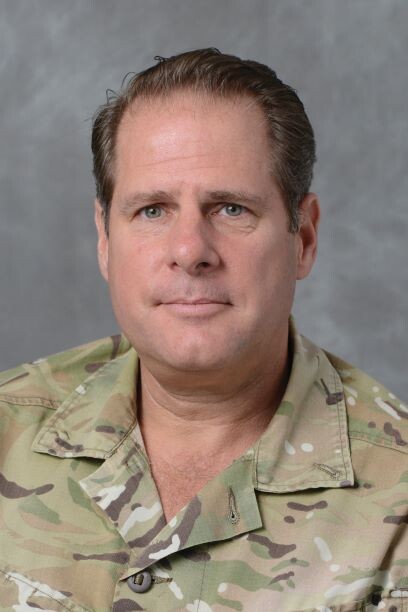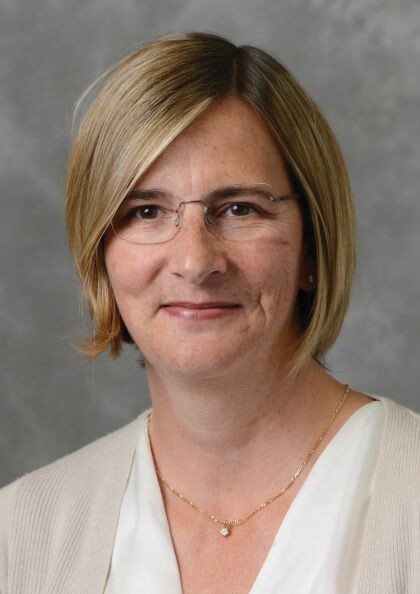Orders are the backbone of life in the armed forces. Taking and giving instructions defines priorities and hierarchy in the military perhaps more than any other sphere of life. So when a digital transformation programme in the Ministry of Defence aimed to move the department’s IT and digital teams from being order-takers to rule-makers, it was a major shift in approach.
The transformation was spearheaded by the creation of the MoD’s Defence Digital organisation, which in December 2019 brought together a number of previously disparate teams that worked on IT across both the department and the individual forces to create an organisation with around 2,400 personnel including military, civil servants and contractors.
Headed by the MoD’s chief information officer, Charlie Forte, Defence Digital is intended to coordinate requirements across the forces and the MoD through supplying IT to 200,000 users – including on global military operations – and integrating strategy, planning and performance management. It also leads on defensive cyber strategy and capability development, giving it a key role in protecting the UK from cyber attacks on a whole host of military infrastructure.
CSW spoke to three senior figures in Defence Digital: Christine Maxwell, director of cyber defence and risk; Major General Tom Copinger-Symes, director of strategy and military digitisation; and Caroline Bellamy, the chief data officer, to find out more about the creation of the organisation.
 Maxwell (left) immediately highlighted the importance of boosting digital’s role in the defence hierarchy.
Maxwell (left) immediately highlighted the importance of boosting digital’s role in the defence hierarchy.
“Previously we were mainly a delivery organisation that took orders from other parts of defence in terms of programs and capabilities,” Maxwell says. “Now Charlie has created something that looks like an IT leadership team that you can see in the private sector.”
That allows the digital team to take on more of a cross-force leadership role, Maxwell says. “Now rather than being an order-taker, Defence Digital is instead looking at what IT could be in defence, and bringing all the right people into the roles to actually drive change out across the organisation.”
Copinger-Symes agrees with Maxwell’s order-taking versus rule-making distinction, and highlights the need to “build a more connected defence enterprise”.
“So we still take orders, [meaning that] we still fulfil customer requirements, but we are starting to be able to lay down the rules of the road, so that there is some coherence to what the navy wants to do, or what the army wants to do, or what the corporate department wants to do,” he says. “And then we work collaboratively with the rest of defence and build a more connected defence enterprise.”
Bellamy says Defence Digital is now “a much more digitally orientated organisation” than its predecessor parts, with a focus on “collaboration in the language of what outcome we’re trying to achieve”.
She adds: “From my perspective, coming in as a chief data officer, it’s about making the data work for the organisation in a compliant, secure, digital way. That wasn’t present and is now firmly embedded.”
Such an approach is vital given the military’s digital capabilities are in the spotlight now more than ever. Improving digital and data across security, defence, development and foreign policy is as a priority in the recently-published Integrated Review.
“This will need to be underpinned by investment in next-generation secure digital, data and technology platforms, skills and a strong focus on improving knowledge and information management practices,” the review says. “We will focus on the responsible use of new data platforms, digital tools and participative processes to support policy-making and improve inclusivity and transparency.”
However, developing a position where a digital function can set requirements and regulations across five military domains – air, land, sea, space and cyber – and within those well-established military structures, is not something that happens instantly. Copinger-Symes acknowledges that he and his colleagues “are still building” a presence across defence.
“I think we’re still a challenger not an incumbent,” he says. “I think with all digital, whether in business or in government, you’ve had decades of being very much a supporting role. The chief information officer would not be at the top of the hierarchy, but would report to the chief risk officer or the chief financial officer or whoever.
“But just like in business, you’re suddenly seeing CIOs and other digital roles on the main board because [organisations] realise they need that advice and that leadership role, not just a supporting role. I think we’re absolutely on the same path.”
This means Forte, the MoD’s CIO, sits on the department’s executive committee and leads part of UKStratCom, the MoD’s strategic command. Add in the fact that Copinger-Symes, Maxwell and Bellamy’s roles are all new and the magnitude of change becomes clearer.
 “It’s not always easy,” Copinger-Symes (left) says. “The rule-making is not always welcome, and, of course, it’s not just laying down the law. It’s working collaboratively with the rest of defence to work out the best way to deliver an impact.”
“It’s not always easy,” Copinger-Symes (left) says. “The rule-making is not always welcome, and, of course, it’s not just laying down the law. It’s working collaboratively with the rest of defence to work out the best way to deliver an impact.”
This requires a mindset change across defence, he says, to realise that “defence is not unique in government”, and that it can learn and share digital and technology development and insights with other parts of government.
“We’ve always thought we’re so special, you know: that we’re 80% special and only 20% the same [as others],” he says. “If we can flip that round and recognise we’re probably 80% the same as many other government departments in the national security area, then maybe we get more credit for the 20% where we really need to be different. But if we can be more similar, then we can move a lot faster.”
For example, he says the MoD’s tendency to develop its own tech polices, rather than adopt cross-government ones, “slows us down”.
“They make our lives more difficult, rather than helping us and that’s got to be the wrong way to do it,” he says of the policies. “So we want to be a little less special, because it will help us.”
However, this remains a work in progress, not only in the MoD’s relationship with the rest of government, but also within service branches.
“I’m a very proud soldier and the army has a proud and ancient history, and we do things differently from the navy and air force,” he says. “But if we can find that we share far more than what divides us, that makes us much stronger. And the same with our national security colleagues, the same with wider government.
“So I’m not going to pretend that it’s all sweetness and light, and that we’ve all resolved every single difference.”
The distinct approaches across forces developed, he says, because they previously offered a strategic advantage. “And many of them still do – there are many things not to throw away,” Copinger-Symes says. “But equally, sometimes we just need to play nicer in the sandpit together, because that will give a strategic advantage in a different era.”
One such area where collaboration has really taken hold is in Maxwell’s brief of cyber defence and risk, where she says there is a recognition by the single forces that collaboration is now at a premium.
“They can see that to really address the cyber threat, we have to do things in a joined-up way. And we can’t all be doing different things: we have to have a strategy, we have to work on the team priorities and take it forward.”
She agrees with Copinger-Symes that the MoD’s work needs to be “much more joined up across Whitehall”, and gives her own work with the Government Security Group in the Cabinet Office as an example of an area where MoD skills can be more widely applied. “It is about how can we, as a big department, actually help the wider society and strategy across UK government?” she says. “I think there’s more we can do in that space and we’re now set up so we can actually help.”
Bellamy agrees that she has encountered “tremendous openness” to a more integrated approach. “The door’s really open, I would say, so it’s really welcome,” she says.
And, like Maxwell, she feels that historic rivalries are being overcome by a recognition of the skills that are needed.
“I come in as neutral to our five forces, and data is agnostic to all of them,” Bellamy says. “I can say that I’m not another tribe; I’m in an enabling capability that can leverage the strength of what each has to bring, and also work across them.
“The opportunity that we have through Defence Digital is that those standards and rules of the road come with adherence, but they also come with huge opportunity, because then increasingly we’re an integrated whole force and our roles are actually a key to help us unlock tremendous integration.”
Maxwell says Defence Digital has “won that argument”, while acknowledging she has “created a lot more work for colleagues in the single services, because I’m trying to drive coherence”.
“It is creating some tension, sometimes good tensions and good debate that we can have about this being the right approach and how we are going to do it,” she says. “Yes, it’s hard sometimes but I think the ship has turned and we’re driving forward.”
Copinger-Symes describes dealing with these different bodies and roles across UK defence – and the integration with allies – as “probably the most complex socio-technical thing in Western Europe”.
“The NHS is way bigger than us in number of people, but in terms of endpoint devices, both operational technology and weapons systems, we’re dealing with an awesomely complex range of kit out there, at varying states of legacy,” he says.
The key rationale, then, for Defence Digital is to allow the whole structure of defence to become more nimble though the use of technology, or for technology not to restrict quick responses.
“One of our big challenge is reducing some of the complication, and simplifying some of it,” Copinger-Symes says.
Data revolution
Across this broad range of activities, this means everything from deploying machine learning on cyber risk incidents in Maxwell’s portfolio, to using data analytics tools to unlock insights in Bellamy’s.
And it means the whole of the MoD and the wider forces prioritising digital and data in a way they have not done historically – and in a way that can help settle defence’s technical debt.
 “A lot of our data is locked up in legacy. We’ve got to free it to make those new things – AI or automation, autonomy, or robotics – exciting,” Bellamy says.
“A lot of our data is locked up in legacy. We’ve got to free it to make those new things – AI or automation, autonomy, or robotics – exciting,” Bellamy says.
Mention of these kinds of capabilities can quickly lead to ideas about the future of combat that were not so long ago the realm of science fiction, but Bellamy says this kind of change to military capacity must be conducted at the same time as improving current operations.
“Transforming is different from running and operating, but you can’t do the two things separately,” she says. “That’s why it’s really important in this organisation that we are part of a huge delivery vehicle of defence. The rules of the road and how we’re going to do delivery and run and operate in cyber and digital services must be applied to the whole of defence. But we have got to focus on it, because no kidding anyone, we haven’t focused on it. And we need to, because good data just doesn’t happen by happenstance.”
Based on his service background, Copinger-Symes says part of the reason for this may have been that defence is so used to using intelligence in planning and operations that “we thought we understood how to use data”.
“Speak to any commander in the army, navy, or air force, ask whether intelligence is really important, and they will say, ‘yes, it’s fundamental to decision making,’” he says.
“That was, on the one hand, a great strength. On the other hand, it was a great weakness, in that we saw data-informed decision making as just about intelligence.”
“Transforming is different from running and operating, but you can’t do the two things separately” Caroline Bellamy
Like so much else in Defence Digital’s work, another mindset shift was needed. Operationally, the military viewed intelligence “as something with a big red stamp on it that said ‘secret’ or ‘top secret’, and it had to be collected at huge pain or cost or danger,” he says.
“Actually, data has exploded around us in the current world and an awful lot of it, if treated properly, can be very helpful to inform a whole bunch of decisions, way beyond what we used to call intelligence.
“So I think we thought we had data cracked in the form of intelligence, and we probably need to refresh not only how we create intelligence, but also look at a much greater spread of data types to help inform our decision making and then the other technological exploitations of data that will come with automation and robotics.”
Bellamy sums up the motto for Defence Digital as it prepares to publish its strategy to drive forward its plans in detail.
“Our task where necessary is to break down some of those historic things in the way that defence works,” she says. “But we’re not driving the commonality we talk about for the sake of it, we’re driving commonality because of the opportunity it presents. It drives advantage at many levels.”
Copinger-Symes agrees. “We are ultimately doing it to do what everybody else is, which is to speed us up,” he says. “It will allow us to deliver for the nation more quickly, precisely, affordably and sustainably in the future, and do that in spite of our scale, not be held back because of it.”